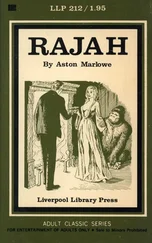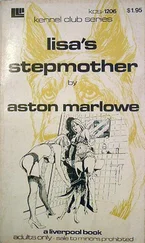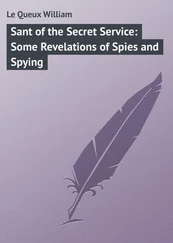William Aston - Shinto
Здесь есть возможность читать онлайн «William Aston - Shinto» — ознакомительный отрывок электронной книги совершенно бесплатно, а после прочтения отрывка купить полную версию. В некоторых случаях можно слушать аудио, скачать через торрент в формате fb2 и присутствует краткое содержание. Жанр: foreign_antique, foreign_prose, на английском языке. Описание произведения, (предисловие) а так же отзывы посетителей доступны на портале библиотеки ЛибКат.
- Название:Shinto
- Автор:
- Жанр:
- Год:неизвестен
- ISBN:нет данных
- Рейтинг книги:5 / 5. Голосов: 1
-
Избранное:Добавить в избранное
- Отзывы:
-
Ваша оценка:
- 100
- 1
- 2
- 3
- 4
- 5
Shinto: краткое содержание, описание и аннотация
Предлагаем к чтению аннотацию, описание, краткое содержание или предисловие (зависит от того, что написал сам автор книги «Shinto»). Если вы не нашли необходимую информацию о книге — напишите в комментариях, мы постараемся отыскать её.
Shinto — читать онлайн ознакомительный отрывок
Ниже представлен текст книги, разбитый по страницам. Система сохранения места последней прочитанной страницы, позволяет с удобством читать онлайн бесплатно книгу «Shinto», без необходимости каждый раз заново искать на чём Вы остановились. Поставьте закладку, и сможете в любой момент перейти на страницу, на которой закончили чтение.
Интервал:
Закладка:
W. G. Aston
Shinto / The Way of the Gods
ABBREVIATIONS
Ch. K. – Mr. B. H. Chamberlain's translation of the Kojiki .
Nihongi . – Translation of the Nihongi by W. G. Aston.
T.A.S.J. -Transactions of the Asiatic Society of Japan.
ERRATA
For "Welhausen," note to p. 113 Конец ознакомительного фрагмента. Текст предоставлен ООО «ЛитРес». Прочитайте эту книгу целиком, купив полную легальную версию на ЛитРес. Безопасно оплатить книгу можно банковской картой Visa, MasterCard, Maestro, со счета мобильного телефона, с платежного терминала, в салоне МТС или Связной, через PayPal, WebMoney, Яндекс.Деньги, QIWI Кошелек, бонусными картами или другим удобным Вам способом.
, read Wellhausen .
For "of," p. 12, l. 18, read on .
P. 335, l. 24, read to do her behests .
ADDENDA
Add, bottom of p. 60, "St. Augustine says, in his 'Civitas Dei,' that funeral observances are rather solace to the living than help to the dead."
P. 41, line 25, after "deities" insert "a phrase which closely resembles the 'Zembla Bogh' used of the Czar by Russians."
P. 31, add to first note, "The Romans had an evil counterpart of Jupiter, viz., Vediovis or Vejovis."
Preface
As compared with the great religions of the world, Shinto, the old Kami cult of Japan, is decidedly rudimentary in its character. Its polytheism, the want of a Supreme Deity, the comparative absence of images and of a moral code, its feeble personifications and hesitating grasp of the conception of spirit, the practical non-recognition of a future state, and the general absence of a deep, earnest faith-all stamp it as perhaps the least developed of religions which have an adequate literary record. Still, it is not a primitive cult. It had an organized priesthood and an elaborate ritual. The general civilization of the Japanese when Shinto assumed the form in which we know it had left the primitive stage far behind. They were already an agricultural nation, a circumstance by which Shinto has been deeply influenced. They had a settled government, and possessed the arts of brewing, making pottery, building ships and bridges, and working in metals. It is not among such surroundings that we can expect to find a primitive form of religion.
The present treatise has two objects. It is intended, primarily and chiefly, as a repertory of the more significant facts of Shinto for the use of scientific students of religion. It also comprises an outline theory of the origin and earlier stages of the development of religion, prepared with special reference to the Shinto evidence. The subject is treated from a positive, not from a negative or agnostic standpoint, Religion being regarded as a normal function, not a disease, of humanity. This element of the work owes much to the continental scholars Réville, Goblet D'Alviella, and Pfleiderer.
In anthropological matters, I have been much indebted to Dr. Tylor's 'Primitive Culture' and Mr. J. G. Frazer's 'Golden Bough.' I should not omit to express my obligations to my friend Mr. J. Troup for assistance with the proofs and for a number of useful corrections and suggestions.
CHAPTER I.
MATERIALS FOR THE STUDY OF SHINTO
Prehistoric Shinto. – Ethnologists are agreed that the predominant element of the Japanese race came to Japan by way of Korea from that part of Asia which lies north of China, probably by a succession of immigrations which extended over many centuries. It is useless to speculate as to what rudiments of religious belief the ancestors of the Japanese race may have brought with them from their continental home. Sun-worship has long been a central feature of Tartar religions, as it is of Shinto; but such a coincidence proves nothing, as this cult is universal among nations in the barbaric stage of civilization. It is impossible to say whether or not an acquaintance with the old State religion of China-essentially a nature-worship-had an influence on the prehistoric development of Shinto. The circumstance that the Sun was the chief deity of the latter and Heaven of the former is adverse to this supposition. Nor is there anything in Japan which corresponds with the Shangti of the ancient Chinese.
There are definite traces of a Korean element in Shinto. A Kara no Kami (God of Kara in Korea) was worshipped in the Imperial Palace. There were numerous shrines in honour of Kara-Kuni Idate no Kami. Susa no wo and Futsunushi have Korean associations.
Until the beginning of the fifth century of our era, writing was practically unknown in Japan. It is certain, however, that a considerable body of myth, together with formal rituals, was already in existence, having been transmitted from generation to generation by the Nakatomi and Imbe , two hereditary priestly corporations attached to the Mikado's Court. We hear also of Kataribe , or corporations of reciters, who were established in various provinces, especially in Idzumo, a primæval centre of Shinto worship. They are mentioned in the Nihongi under the date a. d. 465, and were still in existence in the fifteenth century. Unfortunately we know little about them beyond the circumstance that they attended at the capital, and delivered their recitals of "ancient words" on the occasion of the Mikado's coronation. These must have helped to furnish material for the written mythical and quasi-historical narratives which have come down to us.
Kojiki. – The oldest of these is a work entitled the Kojiki , or 'Records of Ancient Matters.' It was compiled by Imperial order, and completed in a. d. 712. The preface states that it was taken down from the lips of one Hiyeda no Are, who had so wonderful a memory that he could "repeat with his mouth whatever was placed before his eyes and record in his heart whatever struck his ears." English readers may study this work in an accurate translation contributed by Mr. B. H. Chamberlain to the Transactions of the Asiatic Society of Japan in 1882. It is preceded by a valuable introduction.
Nihongi. – The mythical narrative of the Nihongi , or 'Chronicles of Japan,' also an official compilation (a. d. 720), is not quite so full as that of the Kojiki , and it has the disadvantage of being composed in the Chinese language. But it has one feature of great interest. The author, or some nearly contemporary writer, has added to the original text a number of variants of the current myths, thus enabling us to correct any impression of uniformity or consistency which might be left by the perusal of the Kojiki or Nihongi alone. These addenda show that there was then in existence a large body of frequently irreconcilable mythical material, which these works are attempts to harmonize. A translation of the Nihongi by the present writer forms Supplement I. of the Transactions of the Japan Society (1896). Dr. Florenz's excellent German version of the mythical part of this work may also be consulted with advantage. It has copious notes.
Kiujiki. – A third source of information respecting the mythical lore of Japan is the Kiujiki . A work with this name was compiled a. d. 620, i. e. , one hundred years before the Nihongi , but the book now known by that title has been condemned as a forgery by native critics. Their arguments, however, are not quite convincing. The Kiujiki is in any case a very old book, and we may accept it provisionally as of equal authority with the Kojiki and Nihongi . It contains little which is not also to be found in these two works. Unlike them, the Kiujiki makes no attempt to be consistent. It is a mere jumble of mythical material, distinct and conflicting versions of the same narrative being often dovetailed into one another in the most clumsy fashion. It has not been translated.
Читать дальшеИнтервал:
Закладка:
Похожие книги на «Shinto»
Представляем Вашему вниманию похожие книги на «Shinto» списком для выбора. Мы отобрали схожую по названию и смыслу литературу в надежде предоставить читателям больше вариантов отыскать новые, интересные, ещё непрочитанные произведения.
Обсуждение, отзывы о книге «Shinto» и просто собственные мнения читателей. Оставьте ваши комментарии, напишите, что Вы думаете о произведении, его смысле или главных героях. Укажите что конкретно понравилось, а что нет, и почему Вы так считаете.












